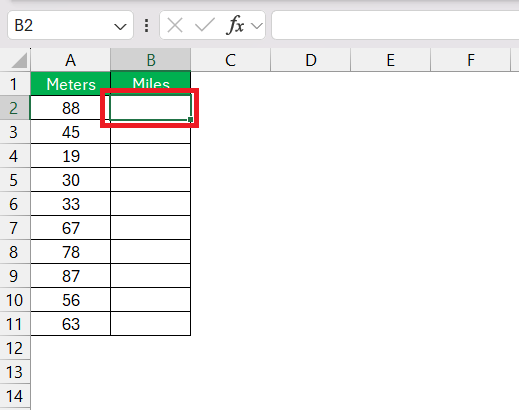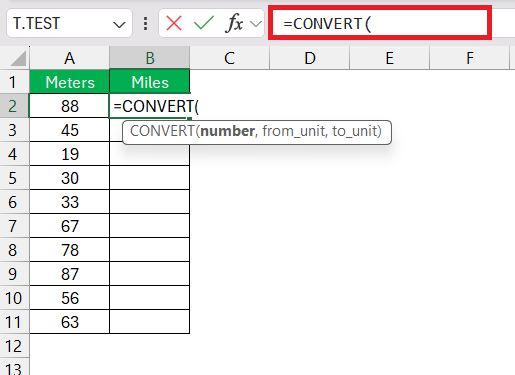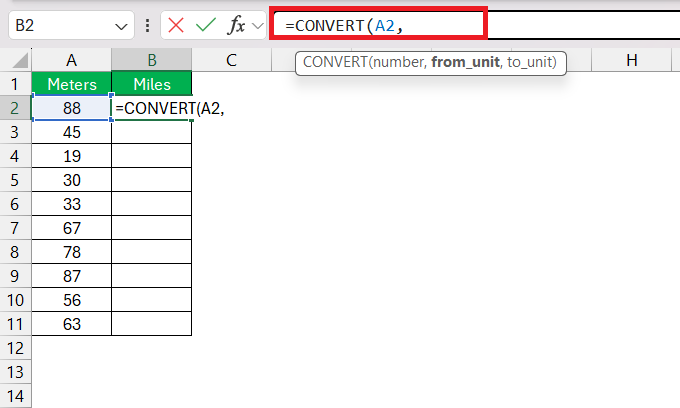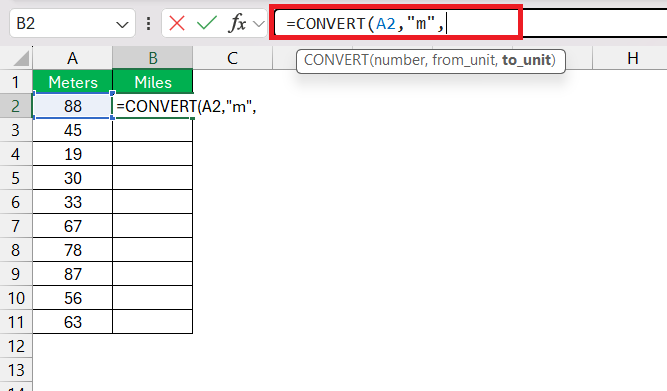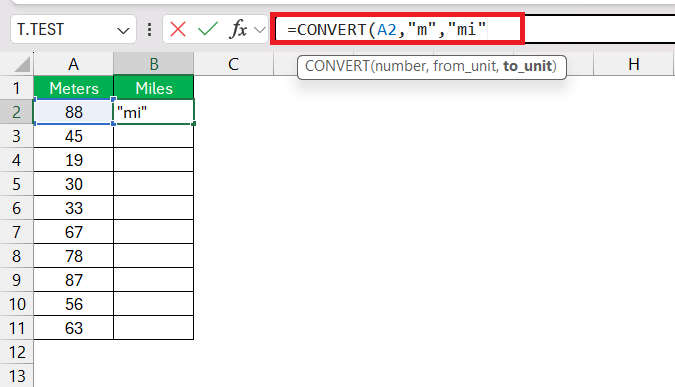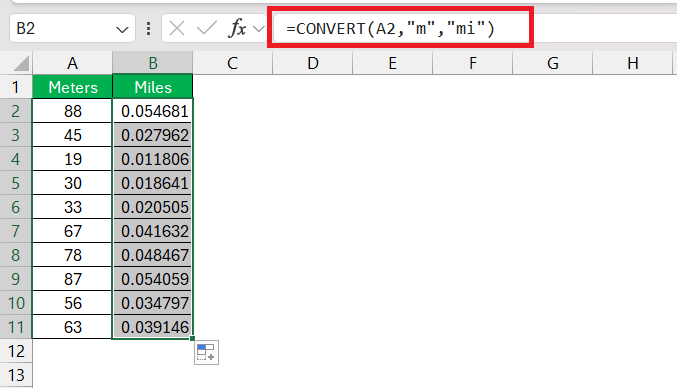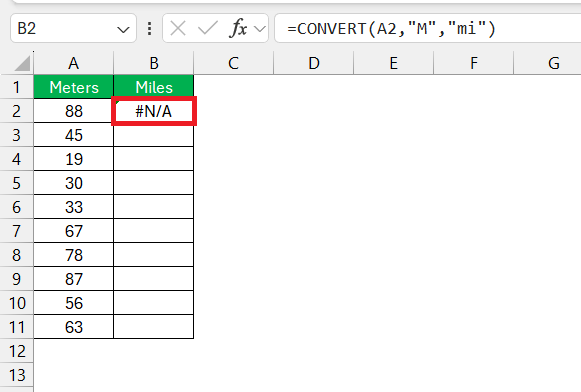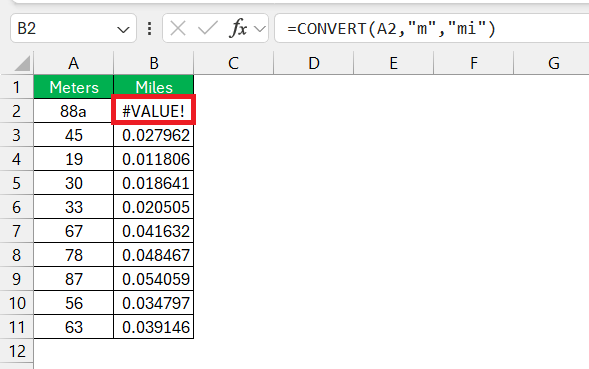Switching between various units of measurement is a common necessity, particularly in fields dealing with international data. Microsoft Excel’s Convert function provides a swift solution for these conversions, enhancing efficiency and reducing errors. By following a few simple steps, you can easily convert meters to miles directly within your spreadsheet.
Key Takeaways:
- Simple Formula: Use =CONVERT(number, “m”, “mi”) to convert meters to miles.
- Unit Abbreviations: Ensure correct unit abbreviations—”m” for meters and “mi” for miles.
- Case Sensitivity: Remember that the Convert function is case-sensitive.
- Multiple Conversions: Drag the formula down to convert multiple measurements at once.
- Error Handling: Common errors include incorrect unit abbreviations and non-numeric values.
Introduction to Excel’s Convert Function
The Utility of Quick Conversions
Imagine being able to switch between various units of measurement seamlessly in your day-to-day tasks, saving time and reducing the chance of errors. With the vast array of units used globally, quick conversions have become a necessity, particularly in fields that deal with international data. Excel’s Convert function offers a swift solution to convert units of measure related to distance, weight, time, and more, all within the comfort of your spreadsheet.
The Basics of Distance Conversion
What is a Meter?
A meter is more than just a unit; it’s the cornerstone of the metric system, serving as the foundational measure of length and distance. At its most fundamental, a meter is defined as the path that light travels in a vacuum within a fraction (precisely 1/299,792,458) of a second. This may sound extremely scientific, but in everyday life, meters ground us in reality—from measuring a dining table to sizing up window curtains or gauging the dimensions of a room, they’re an indispensable part of modern measurement.
Understanding the Mile
A mile, steeped in history, is a longer leap in terms of distance measurement. Originating from the Roman ‘mille passus’ or ‘thousand paces’, a mile is part of the Imperial system still used prominently in the United States today. Each mile encapsulates 1,609 meters, or to be more precise, approximately 1.609 kilometers. Whether you are charting the course of a road trip or plotting the flow of a river, understanding and using miles is especially relevant in regions where the Imperial system prevails, offering scale and perspective on longer distances.
Simplifying Measurements in Excel
Step-by-Step Guide to Using the Convert Function
Using the Convert function in Excel to transform meters into miles is a breeze. Follow these simple steps to perform a conversion:
STEP 1: Begin by selecting the cell where you want your converted value to appear.
STEP 2: Next, type in the formula =CONVERT( to initiate the function.
STEP 3: Input the number of meters you wish to convert, followed by a comma.
STEP 4: Now, enter the “from” unit which, in this case, is "m" for meters, again followed by a comma.
STEP 5: Finally, input the “to” unit. For miles, you’ll use "mi".
STEP 6: Complete the function with a closing parenthesis and hit Enter. Drag the formula down.
Your formula should look something like this: =CONVERT(A2, "m", "mi"). And just like that, Excel does the math, turning those 88 meters into miles right before your eyes!
Real-World Examples of Meter to Mile Conversion
When it comes to understanding the practical application of meter to mile conversions in Excel, real-world examples paint the best picture. Let’s imagine you’re a part of a global construction company that’s coordinating a large civil engineering project. The blueprint dimensions are in meters, but your stakeholders in the U.S. prefer miles to grasp the scale of the work.
By popping those measurements into Excel and using the Convert function, you can provide reports that everyone can understand at a glance, enhancing communication and efficiency on a grand scale.
Or perhaps you’re a fitness coach tracking the progress of your athletes. With distances measured in meters during training sessions and marathons often flagged in miles, converting between the two in Excel allows for quick performance analysis and goal setting.
Enhancing Your Excel Skills
Tips for Flawless Unit Conversion
To achieve flawless unit conversions in Excel, keep these handy tips in mind:
- Double-check your unit abbreviations – “m” for meters and “mi” for miles are not to be confused with “min” for minutes or “m” for miles, depending on the context.
- Remember that Excel’s Convert function is case-sensitive, so always use lower case like using “M” when referring to meters.
- Use absolute references (denoted by the $ symbol) if you’re copying formulas across multiple cells to maintain consistent unit conversions.
- Combine the Convert function with other Excel functions for complex calculations. For example, you can sum up distances in meters and then convert the total to miles with a single formula.
- Always keep an eye on the context to ensure the conversion makes sense—converting temperatures to distances won’t help anybody!
Troubleshooting Common Conversion Errors
If you encounter issues when converting meters to miles in Excel, don’t fret—it’s usually a simple fix. Here are some common errors and how to troubleshoot them:
- #VALUE! Error: This often occurs if non-numeric characters are entered into the formula. Make sure the value you’re converting is a number.
- Misinterpretation of Units: Inputting the wrong unit abbreviation will lead to incorrect results or errors. Cross-verify that “m” stands for meters and “mi” for miles.
- Incorrect Formula Structure: If your formula isn’t working, check to ensure all commas and quotation marks are in place.
- Large Numbers: When working with very large distances, the converted value may appear as scientific notation. Adjust the cell format to ‘Number’ to view the full figure.
Remember, if the Convert function itself is missing, you may need to enable the ‘Analysis Toolpak’ add-in from the Excel options.
FAQs on Meter to Mile Conversion in Excel
Can you CONVERT units in Excel?
Yes, you can convert units in Excel using the CONVERT function. Excel supports a wide array of edits of measurement systems, including length, weight, time, and temperature, making it a versatile tool for various unit conversions.
How to convert meters to miles?
To convert meters to miles in Excel, use the CONVERT function with the formula: =CONVERT(number, "m", "mi"). Replace number with the number of meters you wish to convert. Excel will then output the equivalent distance in miles.
How do I access the Convert function in Excel?
Access the Convert function in Excel by typing =CONVERT( into a cell or using the Formula Builder. If the function isn’t available, you might need to enable the ‘Analysis Toolpak’ add-in from Excel’s ‘Tools’ menu.
Can I convert multiple measurements at once using Excel?
Yes, you can convert multiple measurements at once in Excel. Enter the CONVERT formula in the first cell and then drag the fill handle down to copy the formula to other cells, automatically updating the references.
How do you change the units in Excel?
To change units in Excel, you can either directly modify the unit abbreviation within the CONVERT function or adjust the values by using a custom formula that applies the conversion factor between the units you are converting from and to.
John Michaloudis is a former accountant and finance analyst at General Electric, a Microsoft MVP since 2020, an Amazon #1 bestselling author of 4 Microsoft Excel books and teacher of Microsoft Excel & Office over at his flagship MyExcelOnline Academy Online Course.

